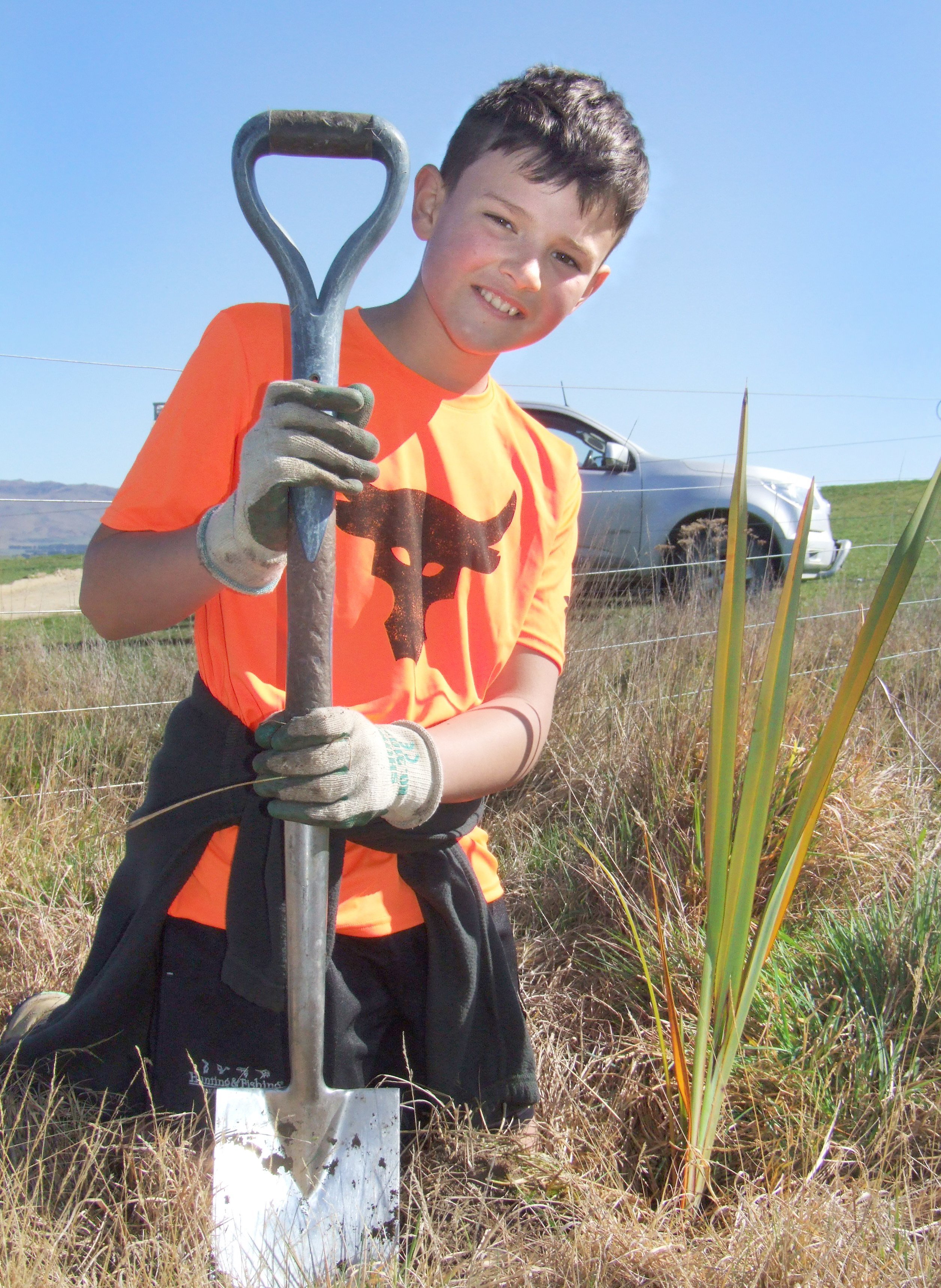
It marked the start of a pilot planting programme of 1000 native species on dairy partnership land, the first of what was hoped to be 90,000 plants in the ground over the next five years.
Tiaki Maniototo is receiving $4.55 million funding from the Freshwater Improvement Fund over the next five years, as part of the Jobs for Nature programme, which would provide jobs for riparian fencing, native plantings and weed control across the Upper Taieri Scroll Plain wetlands and tributaries of the wider catchment.
It would also see the development of a catchment-wide management plan, the protection of native fish habitats, and enhancement of recreational areas.
Project manager Morgan Trotter described it as a "really big moment" to start the work on what was a glorious Maniototo day.

The planting day attracted community volunteers, including Denise Baddock, manager of local radio station Burn, who finished her 6am starting shift early to ensure she was there.
"I’m into community stuff so I thought, ‘good cause’."
Brought up in the Patearoa area, she left when she as 17 and returned to the Maniototo 17 years later, drawn by the country lifestyle — "you can’t beat it", she said.
Amanda Cheesmur, from Waipiata, whose husband worked on farms around the area, said many people had worked very hard and she decided to "come and support them".
She and her family moved from the United Kingdom seven years ago. They were only going to stay three months and then head north, but they had ended up putting down roots.

Patearoa resident Sandy Sullivan described herself as a community-minded person — "I like getting stuck in and volunteering" — while the planting day was also a social outing "which isn’t a funeral", she quipped.
Raylene Hansen, from "down the road", worked on a similar project in Queensland, looking after water quality running out to the Great Barrier Reef lagoon. "I’m here because I’m a member of the community," she said.
Pete Aitken, chairman of Tiaki Maniototo — a sub-committee of Upper Taieri Wai — was keen to see other farmers get involved with the project and help "make a difference".

It was good to be part of a project that would potentially make change for future generations. The group had set its sights high and would probably make mistakes and not get everything right but it was "having a go".
It was also a ground up approach during a time when a lot of regulations were being imposed. "If we can make decisions ... this is our ... community, this is our area. We know it way better than anyone else, way better than anyone in central government," he said.
If local people could "drive the truck", then there would be far better buy-in and a better result," he said.
Caitlin Daley, who is the group’s botanical adviser, selected a good range of different species for the pilot plot, saying it would be interesting to see what happened.
Every catchment group was different and some things might fail. One area might be completely different from a "few kilometres up the road" — so just because one species worked in one area, it might not work in another, so it was about seeing what worked.

There was "definitely" research showing that there needed to be more research on the topic, she said.
Just fencing an area off and leaving it could cause a bigger problem in the area, with the likes of willow trees and long grass. "You can’t fence everything overnight and say, sweet, that’s done," she said.
Fish & Game councillor John Highton said the organisation was very happy to be involved with Tiaki Maniototo and it had contributed money towards the experimental planting.
Personally, he loved the area and had spent a lot of time fishing there. "It’s a fantastic place to spend time," he said.
He believed catchment groups were the way forward; one thing that was being discovered was that a one-size-fits-all approach to regulations did not work.
There were all sorts of practical considerations to be taken into account and there needed to be room for some exceptions, or different methods, he said.





















